Paintings Conservation, Gliding and Frames Conservation:
It ain’t over til the….paintings are reinstalled in the opera house! McKay Lodge Conservation recently performed the art conservation treatment of two large paintings and their frames from the formerly closed Woodward Opera House in Mount Vernon, Ohio. The Woodward Opera House paintings conservation project was part of a whole building revitalization project.

The two- six feet by nine feet paintings were installed prominently on either side of the stage. At house left is Dawn (or Morning), a depiction of a mythological figure, her back to us, struggling to lift her flaming torch into the sky, while a figure shrouded in the black of night lies beneath her. To the right is Mid-day, a fully awake figure hovering over a verdant field with a sun framing her head in a brilliant nimbus. They were painted in tempera by Mathias Armbruster (1839 – 1920), a scenic artist of the period. The artist and his son operated Armbruster Scenic Studios in Columbus, Ohio – the first theater set design company in the United States.
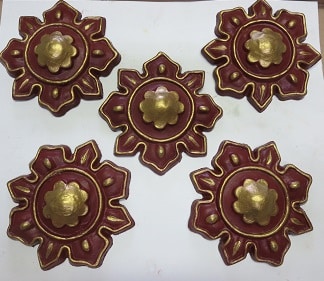
The frames are massive, architectural structures- more like set pieces than traditional picture frames. Though the frames are constructed of sturdy wood painted red and black, they are adorned with delicate gold touches. The frames were not originally hung, but they were secured directly to the walls with heavy steel nails to support their weight.
During the long period when the theater was closed, the paintings suffered from water leaks, the lack of heat in winter, and even bird droppings. McKay Lodge Conservation was charged with the art conservation treatment of the paintings and frames.
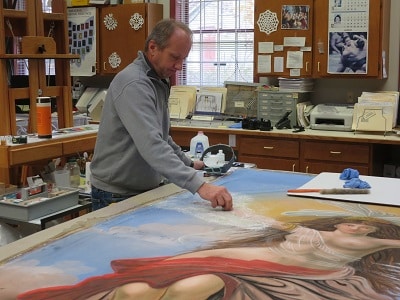
The paintings and frames arrived at the lab in very poor condition. The unvarnished paintings had accumulated a heavy layer of dirt on the front and back. The canvases were slack, and imprints of the stretcher bars could be seen through to the front. Even with the dirt, tears, water stains, and paint loss of many decades, the brilliant colors could still be observed. The frames were dusty and coated with a thick layer of varnish that had darkened over time, turning the red areas to muddy brown.
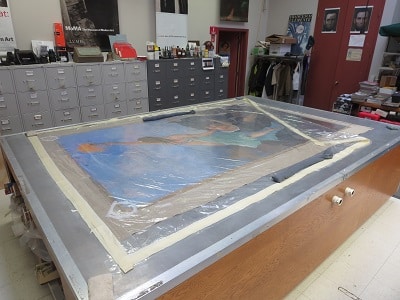
Paintings conservator Stefan Dedecek carefully removed the paintings from their weak stretchers then cleaned the front and back of each painting. He lined the paintings onto linen, flattening them to remove the stretcher imprints. He then placed each painting onto new stretchers. Restretching onto sturdy, new stretchers will provide the proper support and keep them in plane. Next, tears were repaired and losses were inpainted.
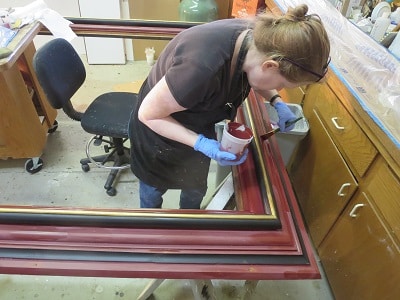
If the paintings were large, then the frames were even larger. Only one frame could fit into the lab’s frame shop at a time and some keen logistical skills were needed for moving the frames around the lab, especially since some other large objects were occupying the same space. Anyone passing through the shop had to turn side-ways to fit between frames! Conservation technician Dee Pipik cleaned the frames and removed the old discolored varnish, revealing the original design of black and a rich, red color beneath. The original missing gold designs were recreated and broken elements repaired.
The frames and paintings were returned to Mount Vernon in December 2017, and just in time, because the space itself has also been undergoing some important revitalization.

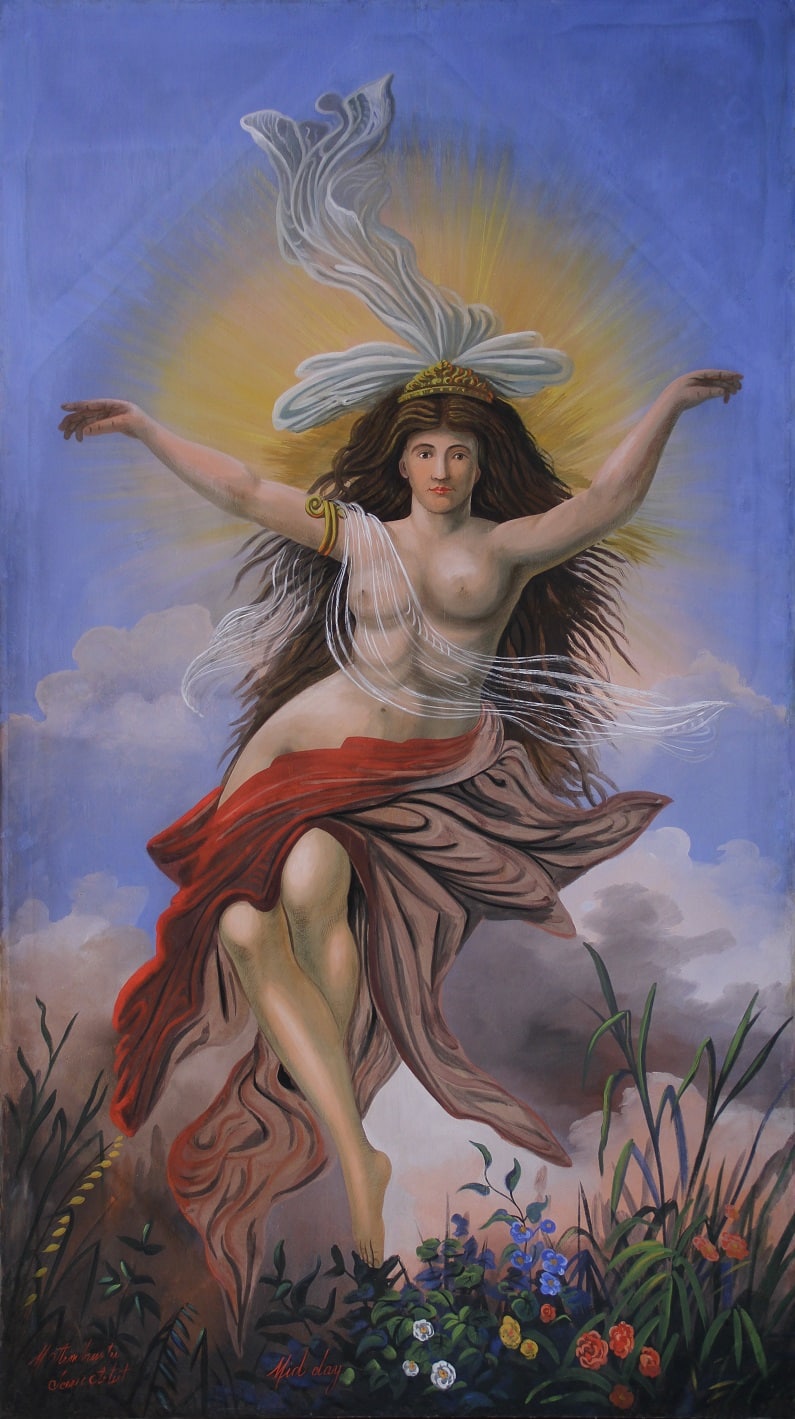
The revitalization recalls the notable past of the opera house since its beginnings in the 1850s. The space was a real treasure with a third story theater holding a unique horseshoe-shaped balcony. It was conceived and built in 1851 by community leader Ebenezer Woodward, the upper story opera hall was intended to provide a place for public events, thereby strengthening the ties between local citizens the businesses on the lower floors. In the latter half of the 19th century, the theater bustled with activity, but with the advent of first floor movie theaters elsewhere in the county, by the early 20th century it took on various other uses including a gymnasium, a party center, a roller-rink, storage, and even an indoor horseshoe pitch before it fell into disuse. Eventually the opera house was closed.
The Woodward Opera House restoration project, begun in 2000, aims to bring the theater back to its former glory and provide the community with an arts center offering educational programs, training opportunities, and performances in a historically rich environment. The facility will also have space for retail, offices and dining. The Woodward Development Corporation plans on starting theater operations in 2018!
